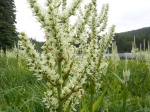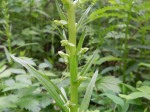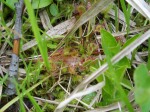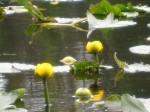
The question was asked of me the other day, “Where did you get the idea for the Missoula Flood story?”
I paused to think before I responded. My first thought was, “I should have a good answer to this question on call in my mind.” My second thought was, “The answer to that one is anastomosing.”
“Anastomosis.” It’s one of my favorite words that I have learned through research of the Missoula Floods. I found it in a description of Bretz about the channels of the Channeled Scablands. The word refers to the intertwining connections found in the veins of leaves, the veins in bodies, the braided channels of certain rivers and the interconnections that make up a certain veins of minerals in geology. I thought it to be a perfect word connected to time travel.
I lived in Missoula Montana from 1996 to 1999. Living in the valley and looking at the marks of the ancient shore lines of Glacial Lake Missoula almost 2000 feet up Mt Sentinal were big influences. I was fascinated from the start about this ancient lake and the huge floods it produced. The natural history of the west had me captive and I was bound to live in the region for many years to come.
When I moved to Portland in 1999 I joined Americorps for the 2000 Envirocorps team. Our main job was environmental restoration and many of the projects we worked on were in areas that had been significantly impacted by the floods. Places like the Cornwall Track alonong the Sandy River, and the plains of Bordman along the Columbia. Throughout the year I was working in the field and was very close to the land and the tracks of the Missoula Floods.
When my year of environmental service came to a close, I became very passionate about writing. I was going to become a father and I was now teaching environmental education to youth between he ages of 10 and 14.
Then there were the happenings out at the mouth of the Columbia River in 2001. Mysteries I took the next four years to understand were unveiled that night. I no longer talk much about what happened, but my friend Brian and I embarked upon a mycological mythical adventure. The ocean and the land spoke to both of us generating creative currents that took us both in very different and very fruitful directions. I embarked upon two books becuase of that fateful night in November of 2001. The first book, called the Sacred Vacuum, sucked. But I wrote it cover to cover and I was proud of it. It was really a collection of thoughts regarding mysteries of the universe that I had no great grasp of, but needed an outlet to view my lack of understanding from.
The second book, Columbiana, was my college. Literally. I was enrolled in Prescott College and was able to write the book for college credit. It’s about time travel, the Columbia River, the river of time and the science and art of tracking. I blended my personal narrative with the fictitious story of Peter Goran and his quest to understand the Oregon Time Travel mystery. In the story there are clues scattered all around Oregon as dictated by a map in the Oregon Convention Center. As Peter puts the clues together, he comes to understand the working of the portal in the OCC. The portal requires his input of the “river song” as played on his didgeridoo and he unlocks the mystery and disappears into time. End of story.
It was not a great book and it was not all that bad either. The whole work was very experimental and in the end I believe I got way too emotionally involved in the project and when it was rejected by countless publishers, I began to take it personally.
Let this be a word to aspiring authors, “Keep at it!” If you get knocked down, get up again. And again, and again. Let this also be taken into consideration: The act of writing, creating, and staying focused and committed has it’s own rewards. Too numerous and personal to list in this blog were the delights of Columbiana. Though the book may never see the light of publication, my experiences from writing it and living the adventure of being a young (I was in my mid 20’s), aspiring author were the very building blocks of who I will become.
When the dust on Columbiana settled my children were growing up and I was very involved with reading bed time stories. I had read hundreds of them by the time my daughter was 6 and my son was 5.
I was working in cahoots with Peak Experience Productions co-creating large scale art and music festivals and I was searching for carnivores on the slopes of Mt Hood with a small non-profit named Cascadia Wild. I was still a dedicated naturalist and was offering up various small classes about wildflower identification and the medicinal use of herbs and plants.
There is a jumble of events between 2007 and 2008 that had a great impact on me. Two trips with my kids to The Barter Fair of Okanogan, Washington. A trip with the kids to Montana. A Peak Experience Production at Horning’s Hideout in Oregon and a conversation with my father. The Barter Fair is was up in northern Washington and in order to drive there we have to go through the flood path, up to the glacier carved valleys of the Okanogan. These events were all part of a larger story of the land that I was in love with. Oregon was my home, the greater Pacific Northwest was my range.
My father said to me, “Son, you have a very creative imagination. Your story of time travel is unique and well thought out, but I fear you have written for a subculture and at best you can hope for is a small cult following. You have two children and you need to have a career. Being a writer for a cult audience simply won’t do. You have responsibilities to follow though with and you have to provide for your family. I want you to redirect your talent and create something for the younger generation. I want you to come up with the next Thomas or Mickey. You can make a business out of it. Find some talent to work with and create something that will find a home in the hearts of many people, not just a small subset, but in the majority of people working, raising their families and living normal lives.”
And so, Craigmore Creations was born in the July of 2008. The kids and I took that trip to Montana and on the drive back I decided, without a doubt, that the first project that I would direct would be a graphic novel about the Missoula Floods. Because the floods were amazing, because graphic novels were cool to read and popular with both kids and adults and because Time Travel was still a major fascination of mine. So…mix together natural history, fantasy, art, writing, and a professional approach to creating works of enduring quality and you have the recipe we here at Craigmore Creations are working with.
The project is going very well. I look forward to updating this blog and tracking the development of the story.
–David











 I bought a Tascam digital recording device a few months ago. I figured it would be handy and helpful for our projects. It sat around for a while as we learned how to use it. Digital recording has come a looooooong way since I saw the first devices back in the mid 90’s. Heck, digital recording has come a long way since 2007!
I bought a Tascam digital recording device a few months ago. I figured it would be handy and helpful for our projects. It sat around for a while as we learned how to use it. Digital recording has come a looooooong way since I saw the first devices back in the mid 90’s. Heck, digital recording has come a long way since 2007!